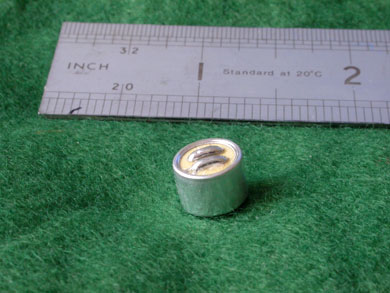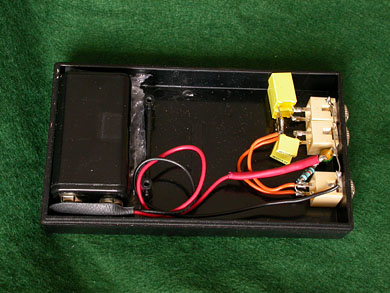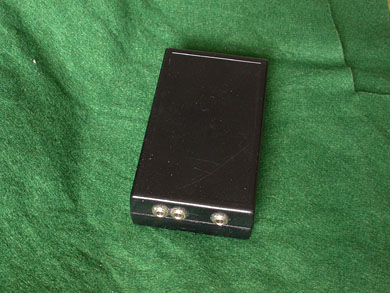

You get better loud signal handling capacity and lower distortion using a battery box than with plug-in-power inputs. I realised this first when I tried using Soundman OKMII binaural microphones on a HiMD minidisc recorder and it sounded awful. Upon investigation, the recorder provides 2.2V via 6.8k for the mic, which is simply nowhere near enough. To keep 1.5V across the capsule, I would need to draw only 0.1mA, which is ridiculously low. This is for electret capsule mics, which feature an internal FET with the output presented on two terminals. They look like this in their raw form.

Most capsule makers indicate their devices need at least 1.5V to operate properly. What you need is a battery box, containing a PP3 battery and some parts to power the mic separately. Even if you can get 1.5V across the capsule using the plug-in-power of older gear, your large signal handling capacity is improved if you use a battery box and go into the line input of the MD (which can handle 1V or so) - you can get high levels like that if you're bootlegging a concert for instance.
Mine is a slight variation on the norm, in that there are two outputs. One is the regular output with a full frequency range. The other has a low-frequency rolloff starting at about 300Hz, which can help you cope with wind noise before it gets into your recorder and overloads the front end. You can therefore select which output to use in the field, depending on your needs at the time. While this will reduce the amount of wind blast, you still need to get a volume of still air around the capsule to eliminate it. The rolloff simply uses the fact that most PiP inputs have a 6.8k input resistance due to the PiP circuit. Working together with the source impedance of the mic a 47nF series capacitor will roll off starting at about 300Hz.
Construction is dead easy. Schematic is here and should be reasonably self-explanatory. The resistor from the battery provides the power for the electret capsule, and the series capacitor keeps the battery voltage out of the recorder and isolates the exisiting plug-in-power if present. If you must use electrolytics for the 1uF capacitor then remember the + terminal goes to the electret mic end, not the recorder end. If you use an electrolytic it is then worth just testing with a digital multimeter to make sure the electret terminal voltage on load is greater than the PiP voltage. You don't need to bother with that if you use a standard unpolarised capacitor as I did.

Internal construction is easy and wired point to point - no circuit board required!
This isn't a masterpiece of miniaturisation - I chose the smallest box easily available that had a PP3 holder onboard, which is about twice as big as it needs to be. I've used 18k resistors here for an unusually low current Marantz mic, but the 6k8 cited in the PDF is about right for most capsules. You can calculate the nearest preferred value for an 8.4V NiMH PP3 using this form

That's pretty much all there is to it. Plug the microphone into the socket on the left and take the output from the filtered or straight connector as required.